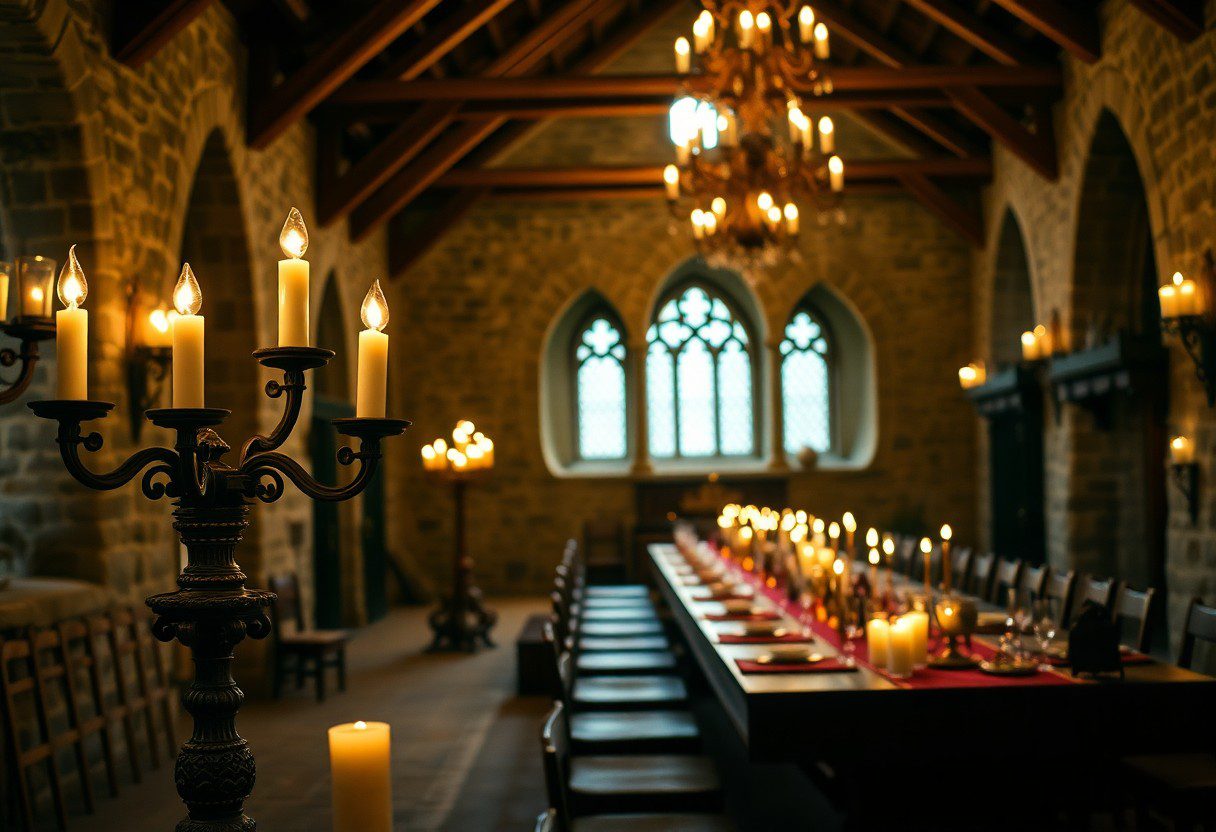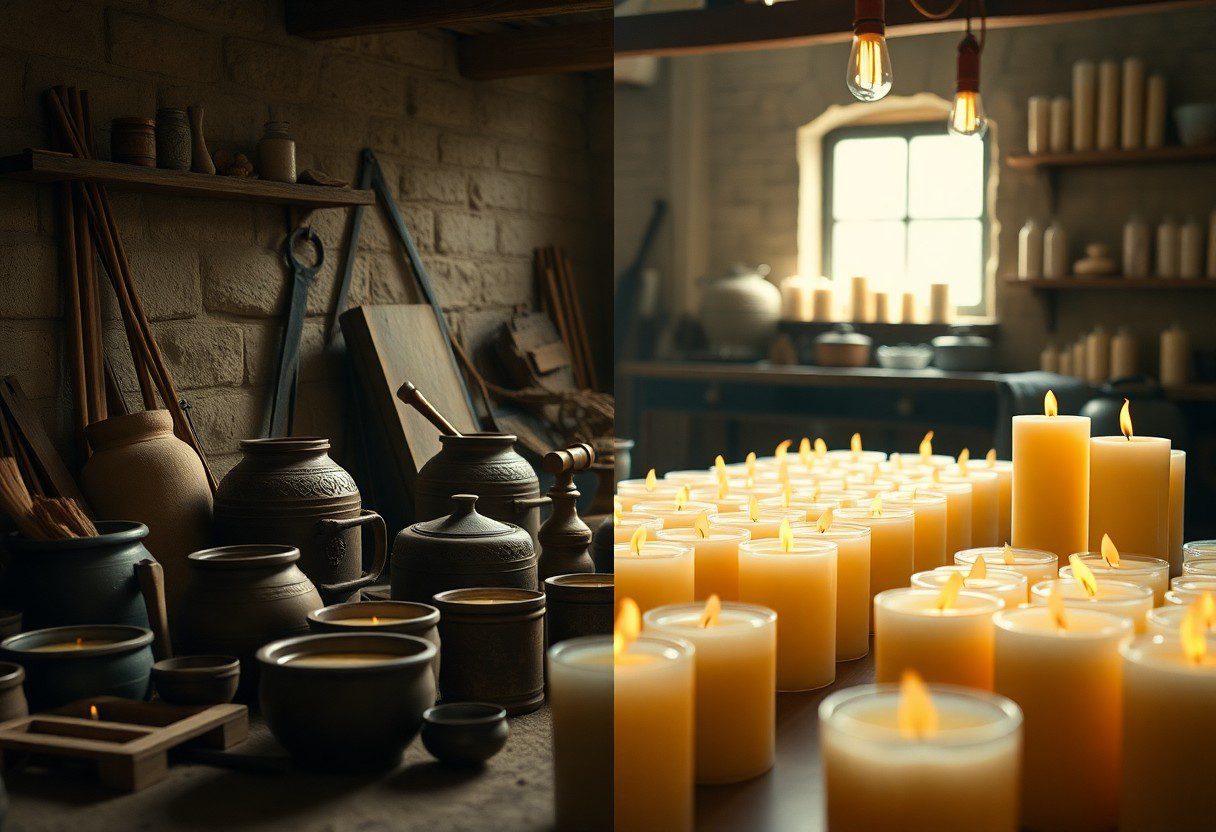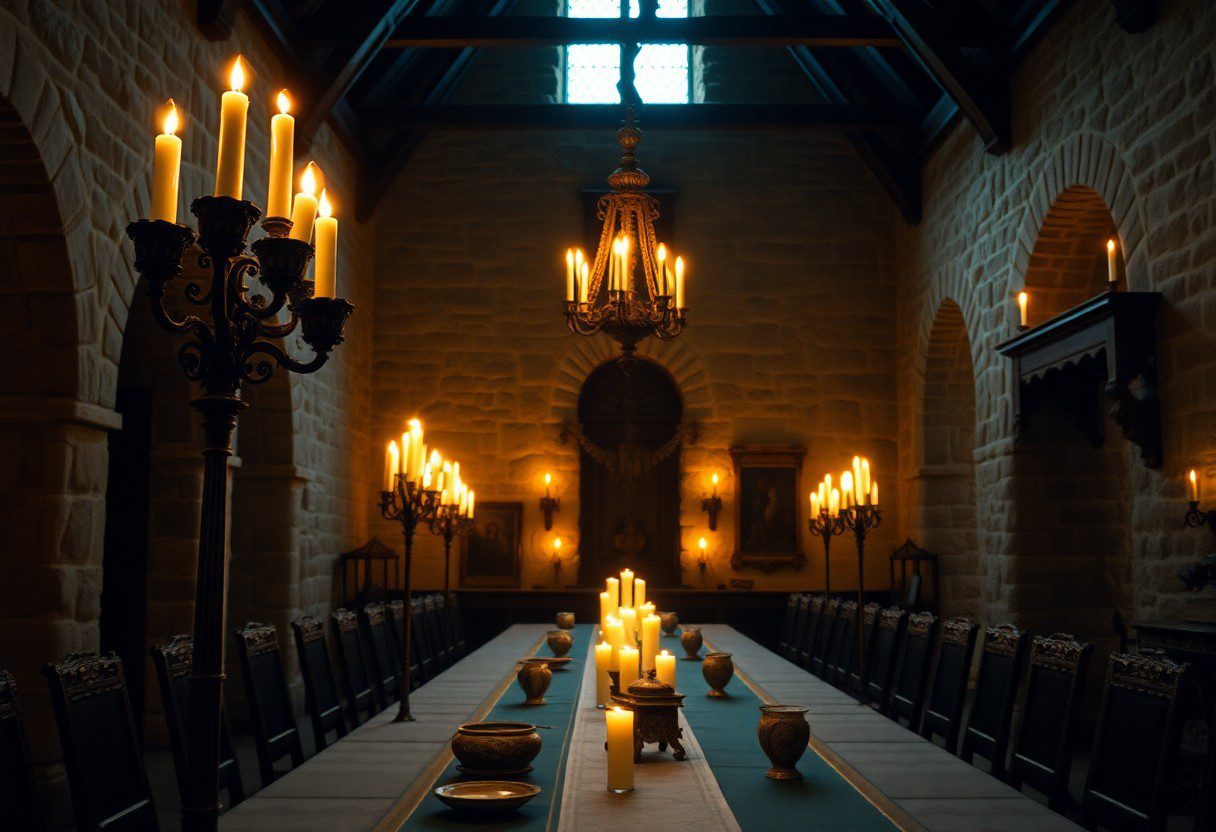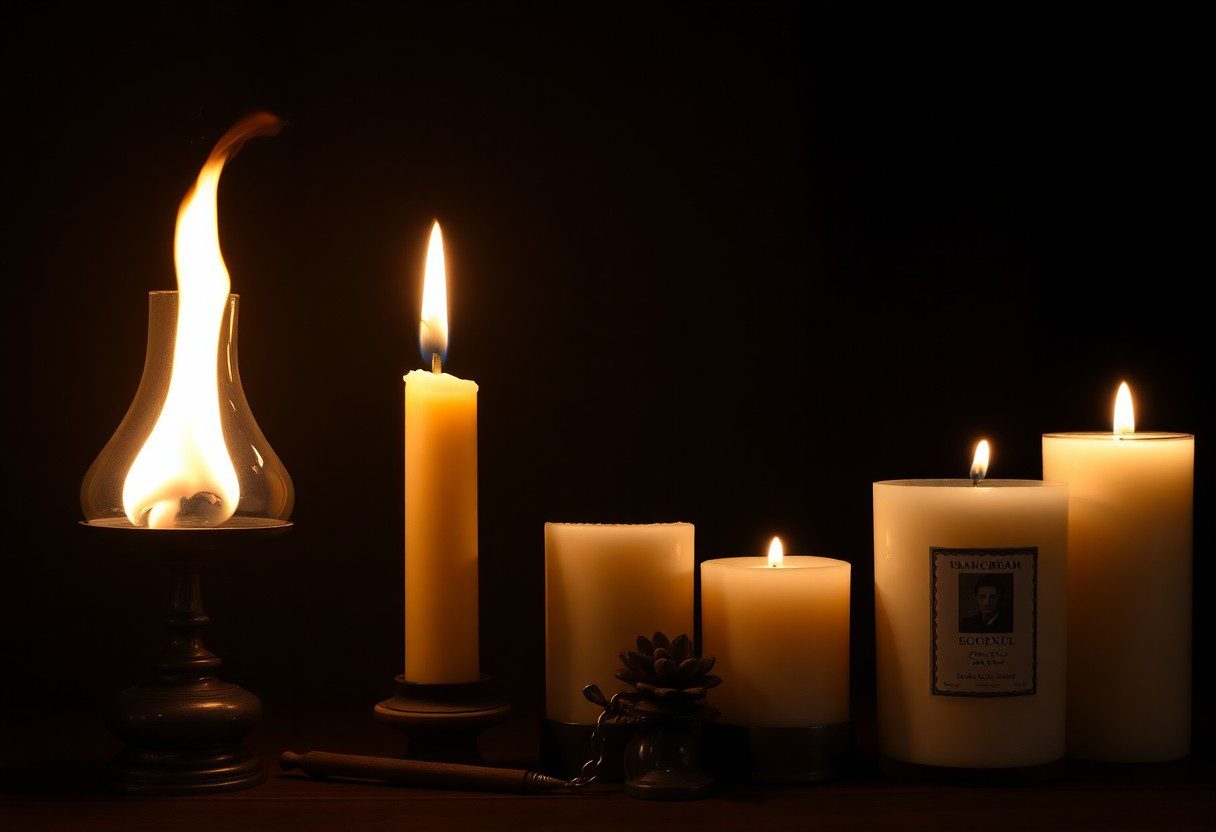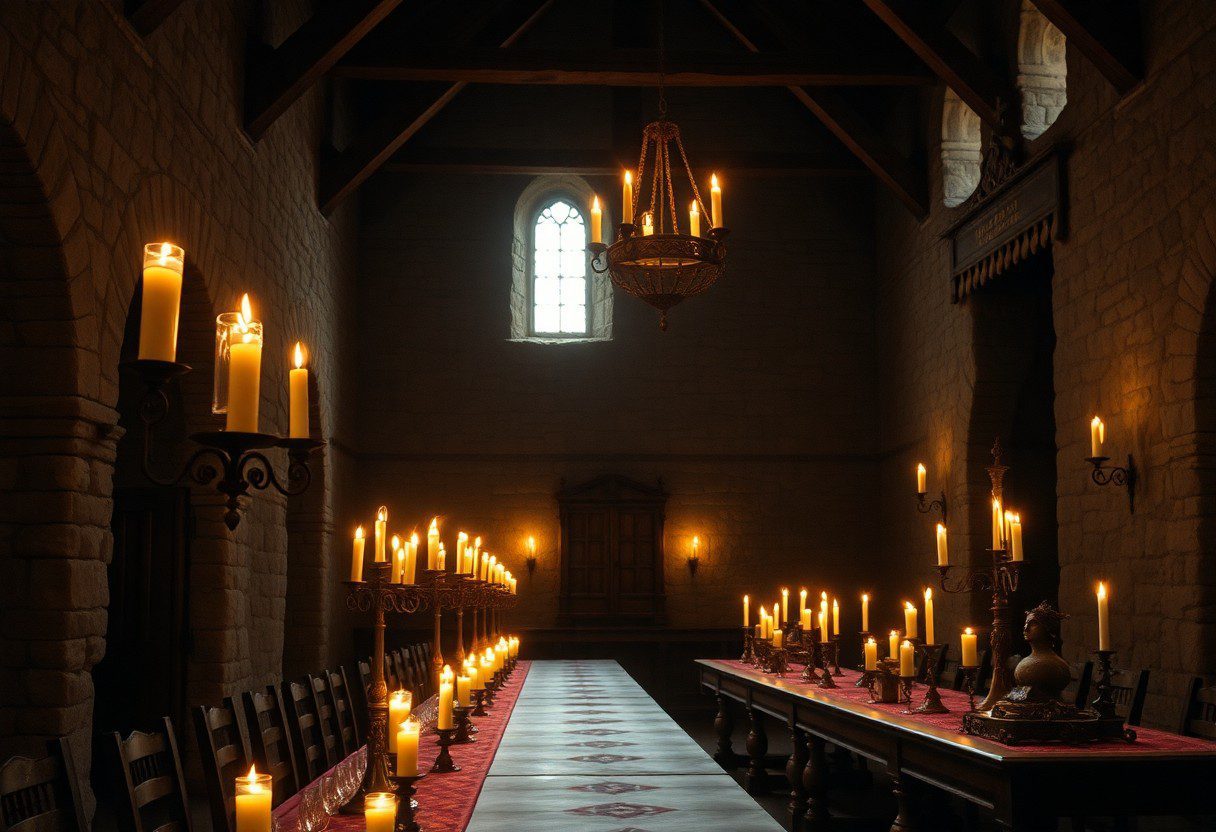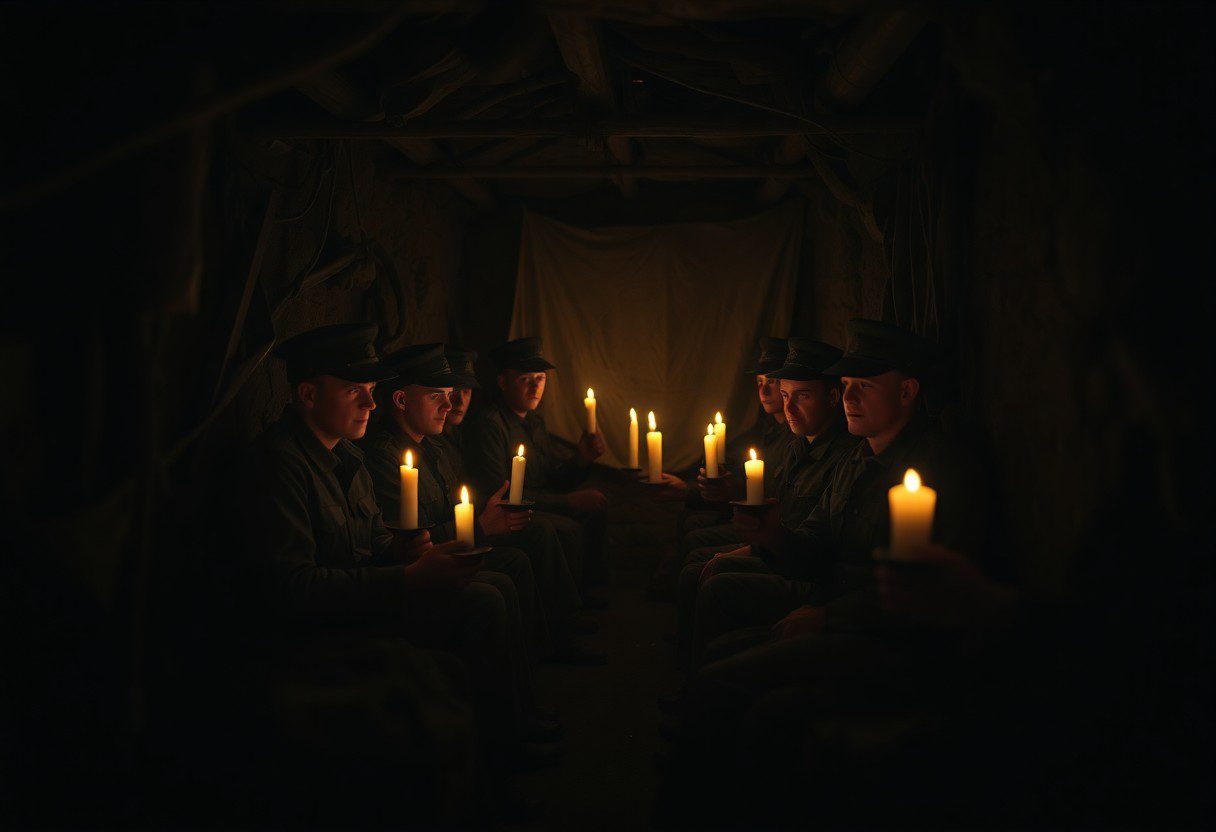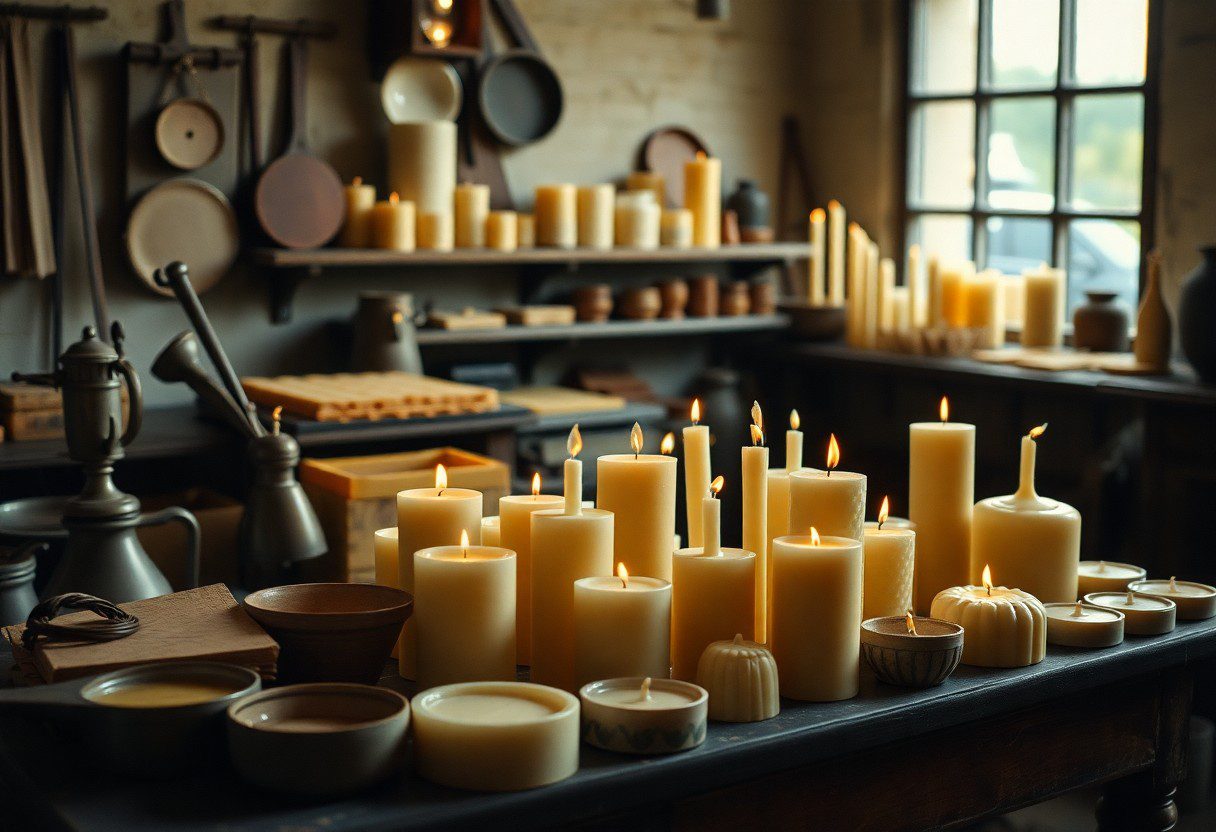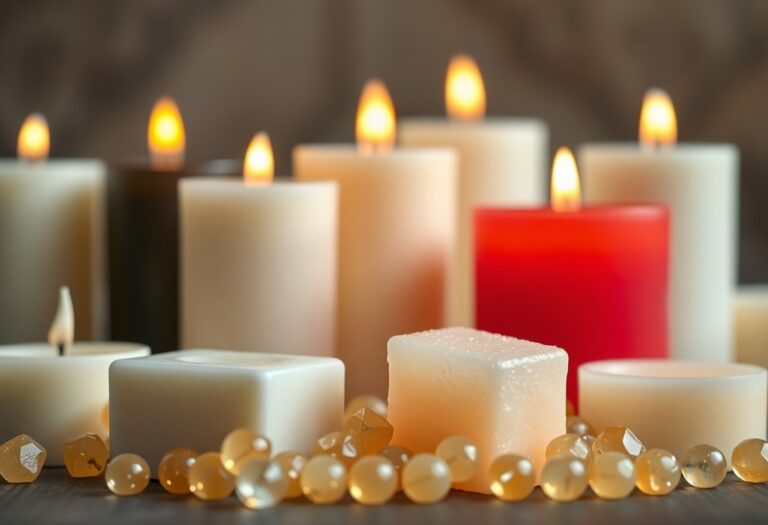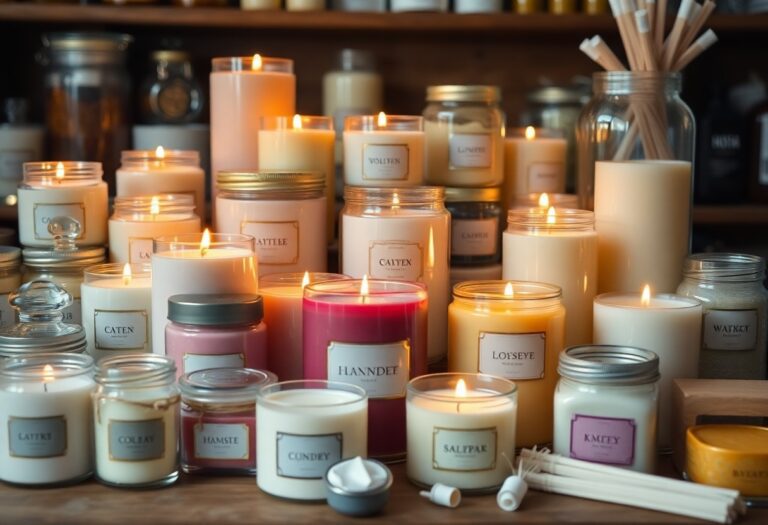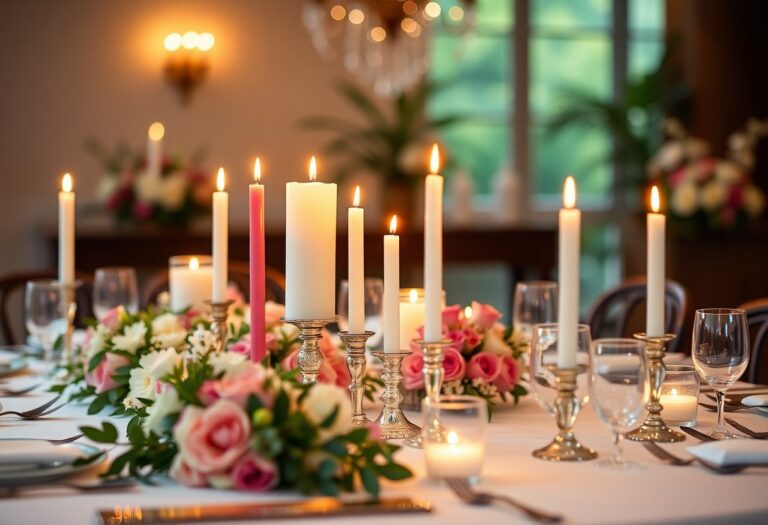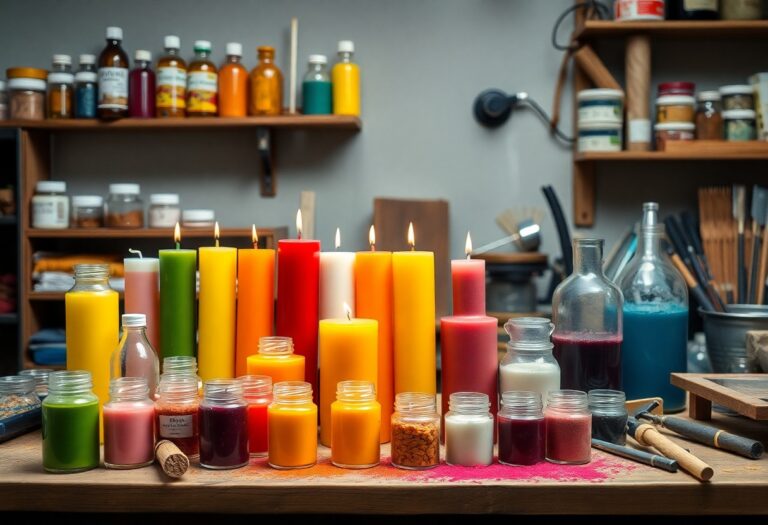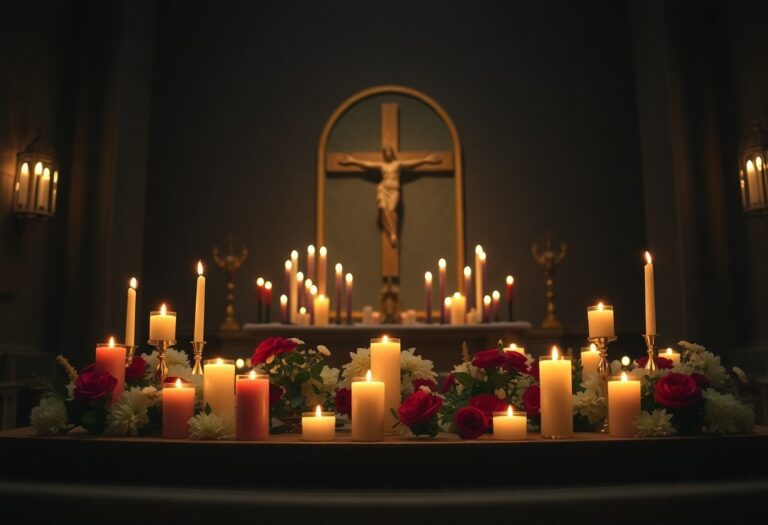Illuminating History – The Importance Of Candles In European Castles And Their Cultural Significance
Over centuries, candles have played a vital role in shaping the ambiance and functionality of European castles, serving not only as sources of light but also as symbols of wealth and status. As you investigate into the rich history of these majestic structures, you will uncover how candles influenced their architectural designs and daily life. From creating a warm, inviting atmosphere during grand feasts to serving as a means of communication and ritual, understanding the significance of candles unveils a fascinating chapter of cultural heritage that continues to resonate today.
The Historical Context of Candles in European Castles
The significance of candles in European castles cannot be overstated, as they not only provided light but also served as a symbol of wealth and status. The development of candle-making techniques during the Middle Ages saw a shift from simple tallow candles—made from animal fat—to more refined beeswax creations, which burned more brightly and emitted a pleasant scent. This evolution in candle usage reflected broader social changes, allowing the nobility to showcase their affluence through the quality and quantity of their lighting. The presence of candles in grand halls and chambers signified not just illumination but also a sense of prestige and opulence in an otherwise dark environment.
Evolution of Candle Usage
Any discussion of candle usage must take into account the various materials and methods that emerged over centuries. Initially, the primary sources for candles were tallow and beeswax, both of which were readily available but served different social classes. As candle-making technologies evolved, specialized molds and wicking techniques were developed, leading to innovations in both the quality and functionality of candles. This transformation not only catered to a burgeoning middle class but also shaped the cultural landscape surrounding that era, lending candles a more integral role in both social gatherings and private rituals.
The Role of Candles in Daily Life
Usage of candles extended far beyond mere illumination; they were integral to your everyday life in castles, creating an ambiance that shaped social interactions and personal rituals. Candles illuminated not just the halls and chambers but also served as a source of heat and a means to cook food. They were critical for maintaining daily routines like mealtimes, religious ceremonies, and even intimate gatherings. Furthermore, you would find that the flickering light of a candle would evoke a sense of comfort, allowing you to escape the harsh reality of the surrounding darkness.
A candle’s role in your daily life in the castle can also be reflected in its symbolic meanings. For example, they were often used during significant occasions, to mark milestones, or as a part of religious observances, which enriched your spiritual and sociocultural life. The soft glow created an atmosphere suitable for storytelling, family bonding, and even contemplation. This multifaceted use of candles illustrated how they were not only functional objects but also deeply woven into the fabric of your history and culture.
Candles as Symbols of Status and Wealth
Even in the medieval period, candles were more than mere sources of light; they were a reflection of social status and wealth. The type and quantity of candles displayed in a noble’s castle could signify their rank in society. While common folk might rely on tallow or rushlights for illumination, affluent households often boasted beeswax candles, which burned cleaner and produced a delightful fragrance. By decorating their dining tables and grand halls with these luxurious cones of light, you could effectively communicate your sophistication and prestige to guests and visitors.
As you explore the opulence of candle usage in castles, it’s vital to consider how the craftsmanship of candle-making played a role in conveying status. The delicate artistry involved in sculpting ornate shapes or intricate designs from beeswax and high-quality materials was often a reflection of a noble’s taste. A well-crafted candle could be seen as a work of art, meant not only to illuminate but also to embellish your surroundings, showcasing your wealth and personal style. The more ornate and elaborate the candles, the more you signaled your economic power.
Materials and Craftsmanship
Status is articulated through the materials used in candle production. While the general populace had to settle for less sophisticated options, you, as a member of the nobility, could afford to indulge in candles made from premium materials. Beeswax was heralded as the superior choice, not just for its clean burn and sweet scent but also for its rarity and expense. The process of collecting beeswax was labor-intensive, which added to its allure. This exclusivity made beeswax candles a statement piece that conveyed your elevated position in society.
Furthermore, the craftsmanship involved in candle-making also imparted a sense of dignity to the lighting arrangement within your castle. Highly skilled artisans were commissioned to create extraordinary designs and forms, transforming simple wax into stunning decorative pieces. Whether they were intricately carved or delicately colored, these candles contributed to the overall aesthetic grandeur of your space. Their lavish presence reinforced your social standing, serving as a testament to your wealth and refined taste.
The Influence of Candlelight on Social Gatherings
With the flickering glow of candlelight, social gatherings in European castles took on a unique ambiance that could not be replicated by other forms of lighting. The warm, shimmering light would transform humble dinner settings into festive occasions. As you hosted feasts or intimate gatherings, the soft illumination not only helped to create an inviting atmosphere but also facilitated intimate conversations and connections among guests. Candlelight became a potent tool to enhance the mood and make your events memorable.
Even on the grandest of occasions, the influence of candlelight was profound; it held an unmatched ability to evoke feelings of warmth and elegance, allowing you to foster deeper relationships among your peers. The dancing flames created a sense of intimacy that modern lighting could struggle to replicate, encouraging personal storytelling and camaraderie among your guests. Framed by the elaborate decorations and tapestries of your castle, the candlelit ambiance would serve as a backdrop for conversations that might contribute to forming alliances, forging friendships, or even sealing business transactions, highlighting the multifaceted role of candles in societal interactions.
Candles in Religious and Ceremonial Practices
Any exploration of candles in European castles would be incomplete without acknowledging their profound role in religious and ceremonial practices. These flickering flames provided more than just light; they represented a vital connection to the divine. In churches and chapels within castles, candles were an necessary part of liturgical ceremonies, symbolizing purity, enlightenment, and the presence of God. During significant events such as weddings, christenings, and holy observances, the number and color of candles held specific meanings, enhancing the sacredness of the rituals. You can imagine how a dimly lit space adorned with glowing candles would create an atmosphere ripe for contemplation, devotion, and a shared sense of spiritual community.
Liturgical Significance
Significance lies in the way candles became woven into the fabric of religious life within castles. Liturgical practices relied heavily on their presence to mark time and passages of faith. From the towering altar candles during Mass to the softly lit votives representing prayers offered by the faithful, each flame told a story of devotion and hope. You may also find that candles played an integral role on during periods of mourning, illuminating the way to peace and solace in dark times while emphasizing the connection between the earthly and spiritual realms.
Ritual Uses in Castle Life
Practices surrounding candles extended beyond formal religious ceremonies; they were embedded in the very rituals of castle life. From the lighting of candles during daily meals to accompanying significant gatherings, these luminous sources were more than mere decorative elements—they were symbols of light conquering darkness. In particular, you might discover how the lighting of candles was often intertwined with elaborate ceremonial feasts, where their glow set the appropriate mood for celebration and unity among nobles and guests. In many instances, certain rituals mandated the use of specific candles to invoke blessings or protection, highlighting a rich tapestry of belief and tradition you would find stirring within the stone walls.
Ritual observances varied widely, with some ceremonies involving the use of candles for protection against malevolent forces. You would learn about how specific rituals—such as blessing the castle grounds or marking important life transitions—often required candles for their symbolic weight. This not only provided a sense of safety and security to those dwelling within but also reinforced the interweaving of light and hope in challenging times. Candles served as beacons illuminating your understanding of values and traditions that guests and subjects shared in castles throughout Europe.
Candle Making and Artistry
Despite the technological advancements in lighting, candle making remains an art form that reflects the history and culture of its time. Traditionally, craftsmen dedicated themselves to perfecting their skills, often passing down techniques through generations. You can examine into The Illuminating History, and Fun Facts About Candles to explore how these artisans were revered in the communities they served. They would typically use resources readily available in their environment, such as beeswax, tallow, and later, paraffin, each material contributing uniquely to the fragrance, burn time, and aesthetic of the candles produced. The artistry of candle making speaks volumes about the culture and customs of the European castles where they were often utilized.
Historical Techniques and Materials
Against the backdrop of a developing Europe, traditional candle making evolved significantly, showcasing regional variations tied to local resources and customs. In many cases, beeswax was the preferred choice due to its high quality and long-lasting burn. This natural material provided a clean and pleasant aroma, making it suitable for both practical use and ceremonial occasions. Tallow, derived from animal fat, was more widely accessible but produced smokier and less fragrant candles. Portraying a balance between utility and luxury, the choice of materials often reflected the social status of the households using them—wealthy individuals likely sought out beeswax candles, enhancing the sophistication of their interiors.
Notable Candle Makers and Their Contributions
Candle makers have played a significant role in shaping the industry and elevating the craft itself throughout history. Famous artisans, like the French candle maker Jean D’Aubigné, pioneered techniques that allowed for the mass production of candles while maintaining the quality. They experimented with different wick styles and materials to improve the candle’s performance and aesthetic appeal. Your interest in such makers will reveal how their innovations not only changed candle manufacturing but also influenced the design and function of lighting in homes and public spaces across Europe.
Consequently, these contributions have left a lasting impact on both artistry and commercial practices in candle making. Their innovations ultimately embedded candles within historical narratives, forging connections between function and elegance that persists to this day. Recognizing these significant figures in candle making allows you to appreciate the depth of craftsmanship, artistry, and cultural heritage that each candle represents.
The Cultural Legacy of Candles in European Literature and Art
For centuries, candles have played a prominent role in shaping the cultural narrative of Europe through both literature and art. They served not only as sources of light in the dimly lit spaces of castles and homes but also as symbols of hope, spirituality, and the passage of time. If you’re curious to research deeper into the practical aspects of their use, you might find it enlightening to explore what did they use for light in castles during the middle ages? Their presence permeated the works of writers and artists, acting as a reflection of human emotions and societal themes that transcended the ages.
Candles in Visual Arts
At the heart of many great masterpieces, candles are visually prominent elements contributing to the mood and atmosphere. Artists throughout history, including the likes of Caravaggio and Rembrandt, have employed the soft, flickering light of candles to create dramatic contrasts between light and shadow, referred to as chiaroscuro. This technique not only enhances the visual appeal but also embodies the intense emotions often depicted in their subjects. By featuring candles, these artists effectively invite you to reflect on the themes of life, death, and the divine, all intertwined in the delicate dance of light.
Representation in Literature
Visual clues provided by candles in literature often convey deeper meanings, inviting you to engage with the text on multiple levels. Writers like Charles Dickens and Shakespeare skillfully use the imagery of candles to explore themes of loneliness, hope, and the fleeting nature of time. The candle serves as a metaphor for life itself—its flame representing vitality, while the potential for extinguishment underscores the fragility of human existence. Instances of characters lighting candles in moments of introspection often symbolize their quest for understanding amidst darkness.
Hence, the representation of candles in European literature brings forth a wealth of interpretations that you can appreciate. Whether signifying a moment of clarity, a ritualistic practice, or even foreboding doom, candles are integral to the emotional landscapes within these narratives. Their subtle presence guides your understanding of the characters and the situations they face, reinforcing the idea that even in darkness, there exists the potential for light—both literally and metaphorically.
Modern-Day Relevance of Historical Candle Use
Many people today still find themselves captivated by the warm glow of candles, a charming link to the past that offers both ambiance and a connection to the historical significance of lighting in European castles. The flickering flame has transcended centuries, serving as a beacon of intimacy and comfort in your home. In contemporary settings, candles are not only practical sources of light but also powerful symbols of tranquility and mindfulness, encouraging you to pause and reflect amidst the hustle of modern life. The way candles have evolved signifies your enduring fascination with light and its emotional impacts, solidifying their place in everyday rituals and celebrations.
Preservation of Traditions
Along with the enchanting atmosphere they create, candles also play a significant role in preserving cultural traditions that have been passed down through generations. You may find yourself drawn to the customs associated with candle use during holidays or special occasions, whether it’s lighting a candle on a birthday cake or commemorating a solemn moment with a flickering flame. These practices reinforce a sense of community and connection with your cultural heritage, offering a tangible link to traditions once celebrated in grand halls of historical castles.
Influence on Contemporary Candle Crafting
Relevance of historical candle use goes beyond their ambiance; it has influenced contemporary candle crafting, driving new approaches to the art form. You might notice how artisans today draw inspiration from traditional techniques, experimenting with waxes, wicks, and scents that connect you to the past while catering to modern tastes. Crafting unique candles is not just a hobby but a creative outlet that allows you to express personal style and can evoke a sense of nostalgia.
Candle making has embraced a variety of materials and designs, transforming simple wax into intricate artistic expressions. Many artisans now use eco-friendly materials and natural fragrances, enhancing your sensory experience while also addressing sustainability concerns. This evolution highlights the balance between historical practices and contemporary values, allowing you to create beautiful, functional pieces that honor the legacy of candle use while being mindful of your environmental footprint.
To Wrap Up
Drawing together the threads of history, you can appreciate how candles served not just as a source of light in the dark corridors of European castles, but also as powerful symbols of culture, status, and community. As you explore into the significance of these simple yet impactful objects, you uncover how they reflected the power dynamics within society and the technological advancements of their time. Each flickering flame stood testament to the intricate balance of necessity and artistry, marking celebrations and solemn moments alike.
As you explore the tapestry of life in these grand structures, consider how the use of candles shaped social interactions and rituals, creating an atmosphere that facilitated both formality and intimacy. You can see that their historical role goes beyond mere illumination; it encapsulates the spirit of the ages. By understanding the cultural significance of candles in European castles, you gain greater insight into the everyday lives of those who inhabit these storied walls, enriching your appreciation for both history and the ubiquitous light sources that continue to influence modern society.
Q: What role did candles play in the daily life of European castle inhabitants?
A: Candles served as one of the primary sources of light in European castles, especially during the night or in poorly lit areas. Without modern electricity, the flickering flame of a candle provided crucial illumination for various activities, including reading, dining, and socializing. Beyond their practical use, candles also created an atmosphere of warmth and intimacy within large stone walls, allowing families and guests to engage in conversation and foster relationships, particularly during the long, dark winters. Their soft glow helped mitigate the often harsh and imposing nature of castle architecture, making the space feel more inviting and comfortable.
Q: How did candles contribute to ceremonial and religious practices in castles?
A: In many European castles, candles were an integral part of ceremonial and religious activities. They were often used during important events such as weddings, christenings, and feasts to symbolize purity and devotion. The lighting of candles during religious services signified the presence of the divine and offered a visual representation of prayers being sent heavenward. Additionally, the ritualistic use of candles in certain ceremonies, such as the lighting of special candles for memorials or honors, highlighted their significance beyond mere functionality. The presence of candles contributed to the overall atmosphere of reverence and solemnity, elevating the cultural importance of these events in a castle setting.
Q: What cultural symbolism is associated with candles in the context of castles?
A: Candles in European castles hold deep cultural symbolism that reflects tradition and spiritual beliefs. They are often associated with enlightenment, guidance, and the transcendence of darkness, representing hope and serenity. In many cultures, the act of lighting a candle has been linked to honoring ancestors or the deceased, serving as a reminder of the past and keeping memories alive. Within the castle walls, candles reflected the status of the owner; the type of candle used (such as beeswax versus tallow) could indicate wealth and refinement. Moreover, during festivities and celebrations, candles symbolized joy and the importance of community gathering, illustrating how these simple lights played a significant role in the cultural fabric of castle life.

